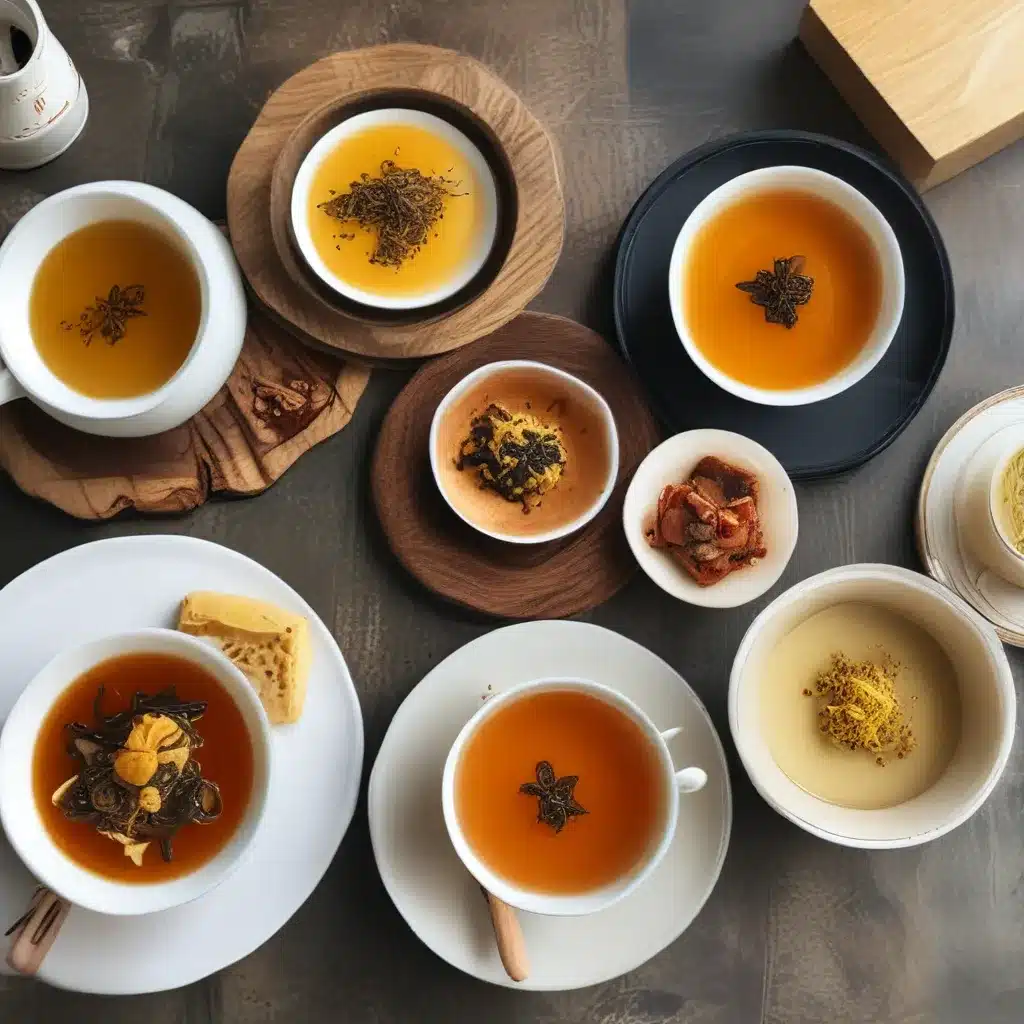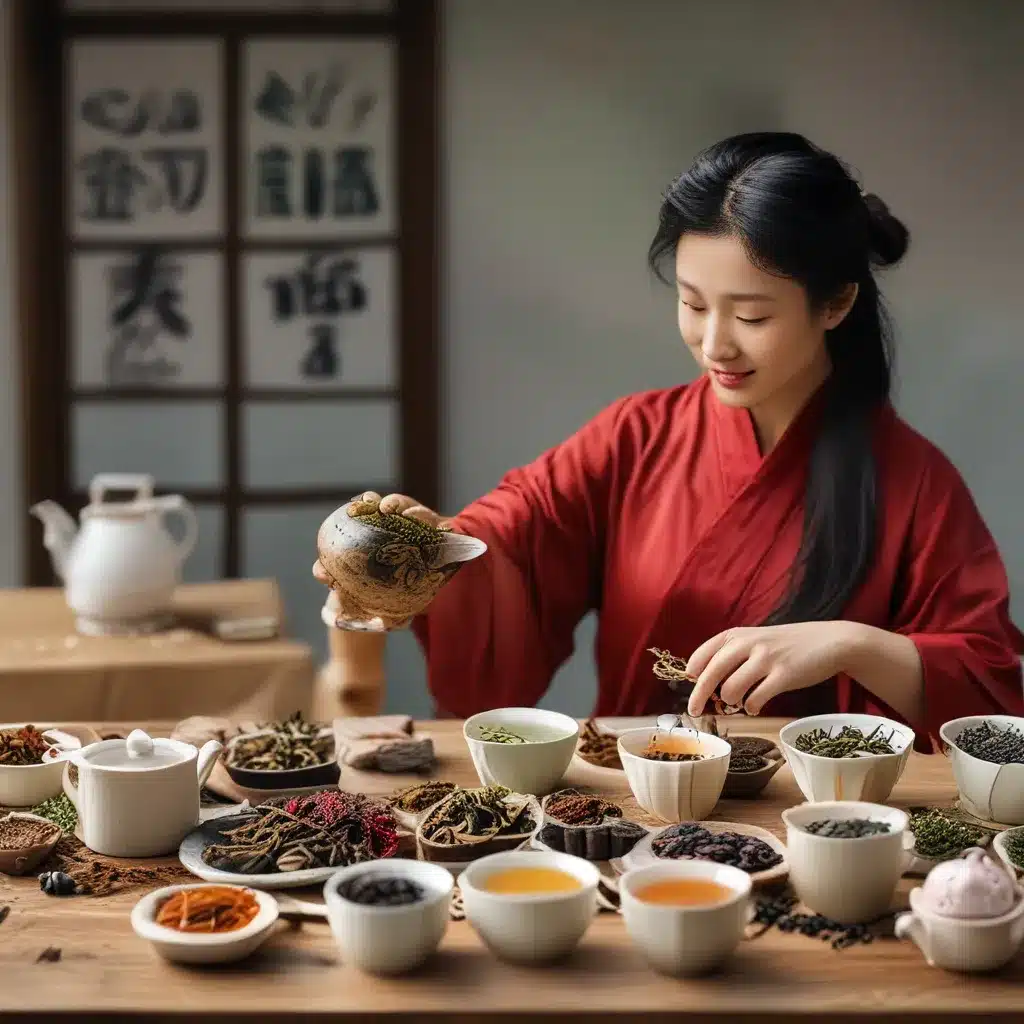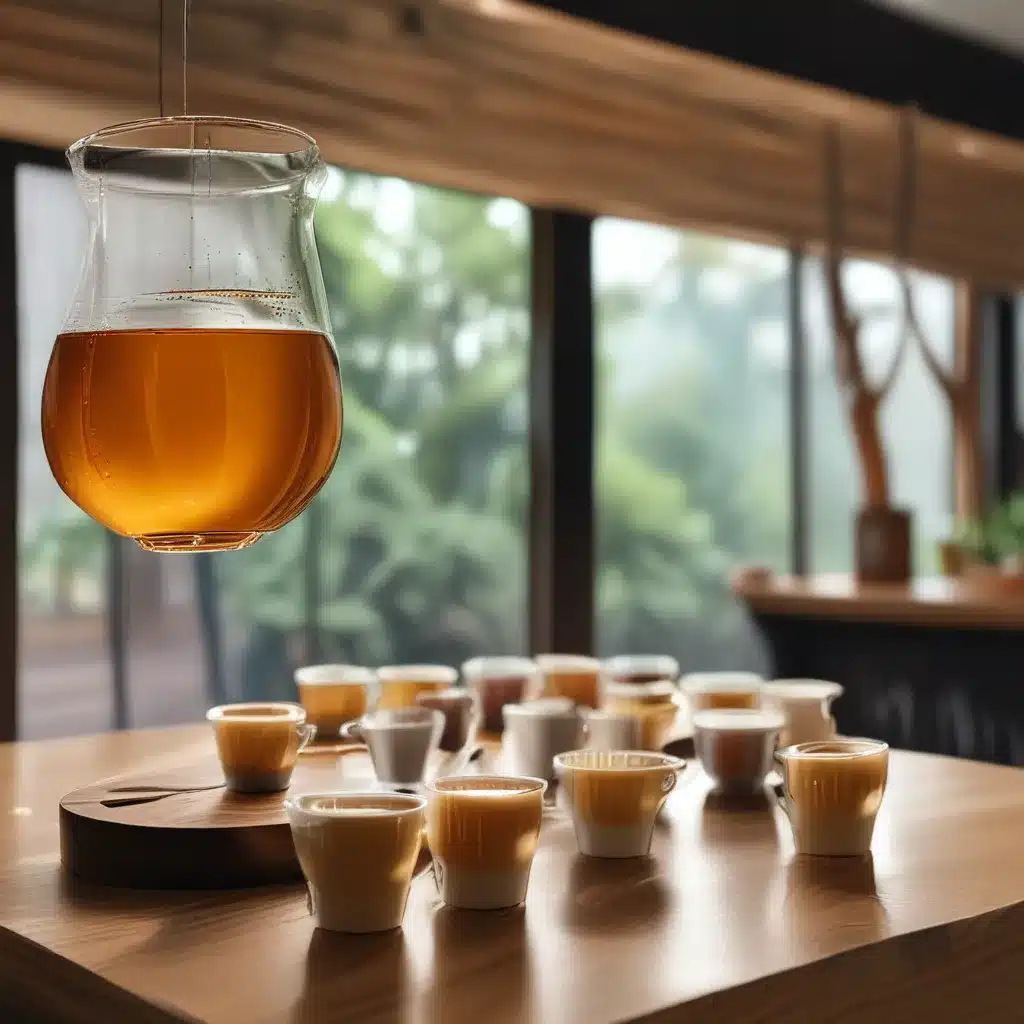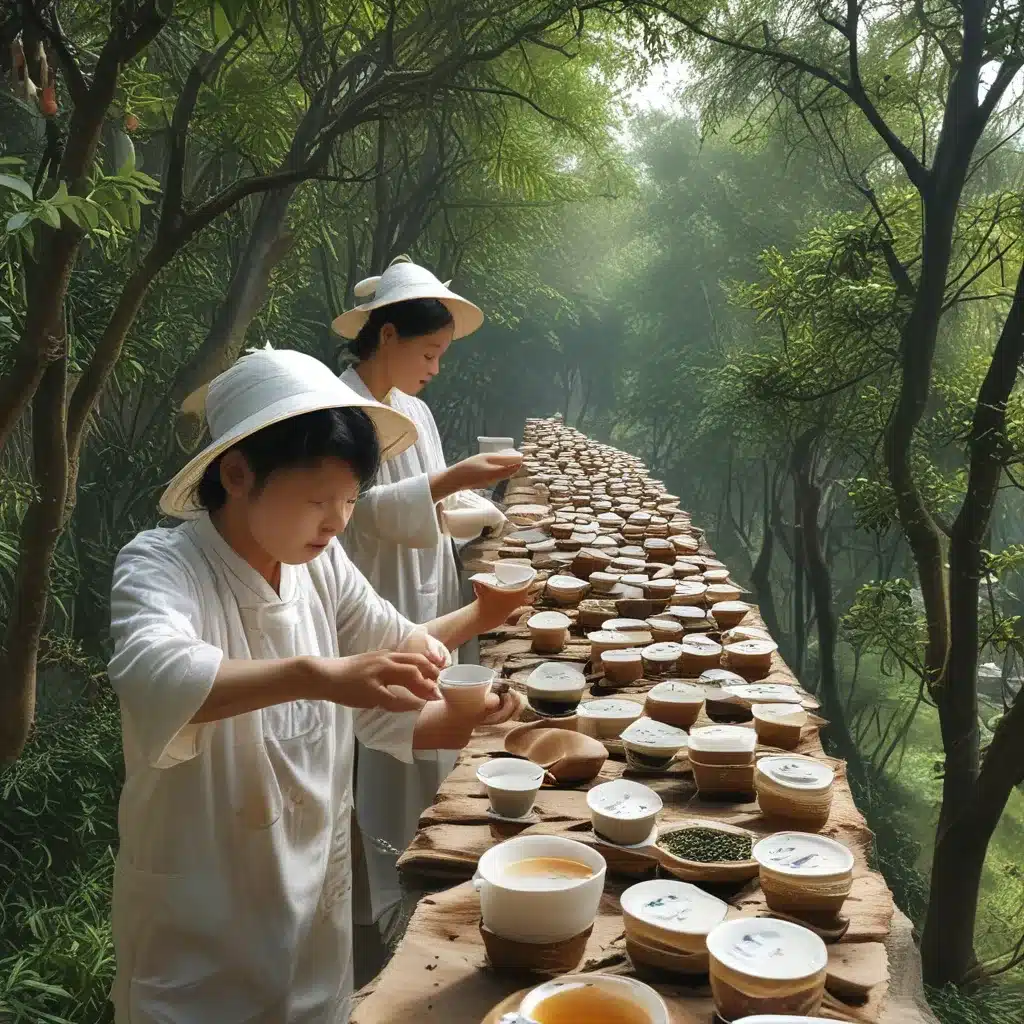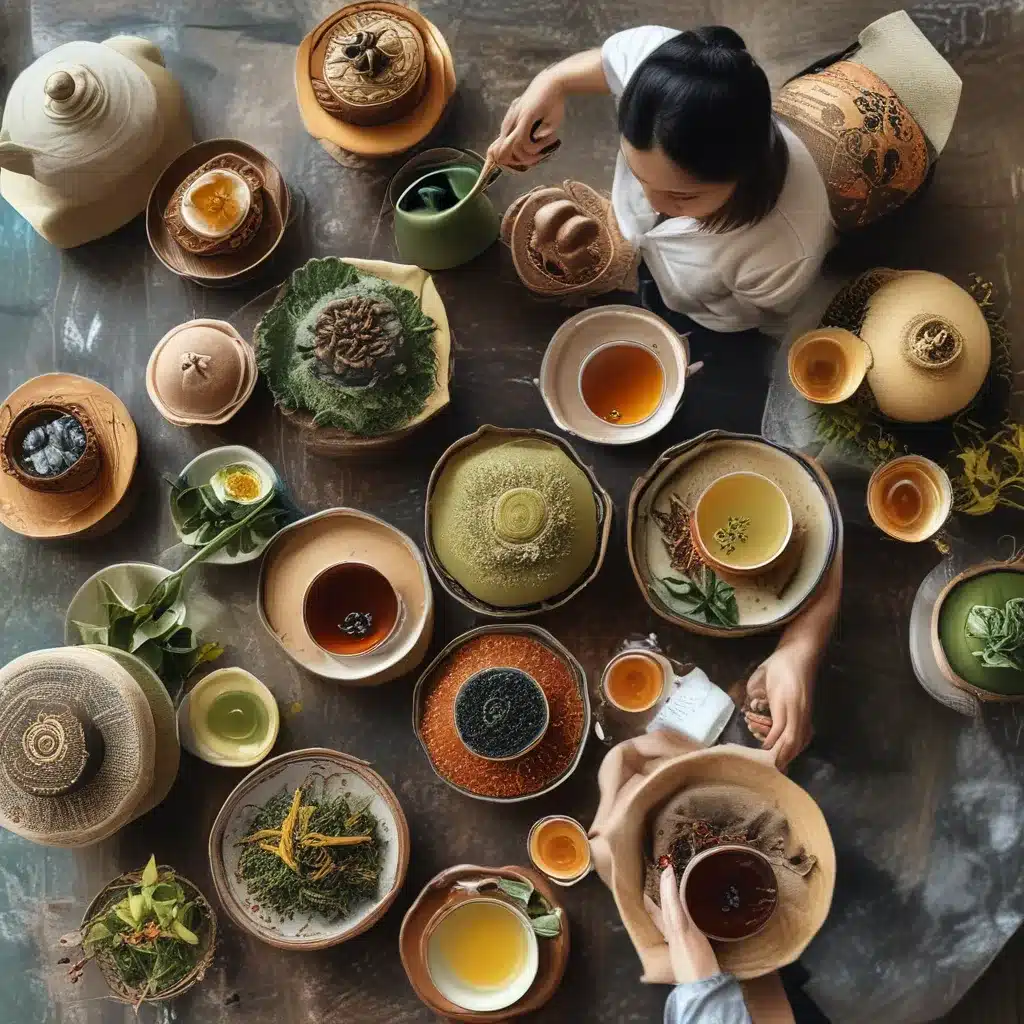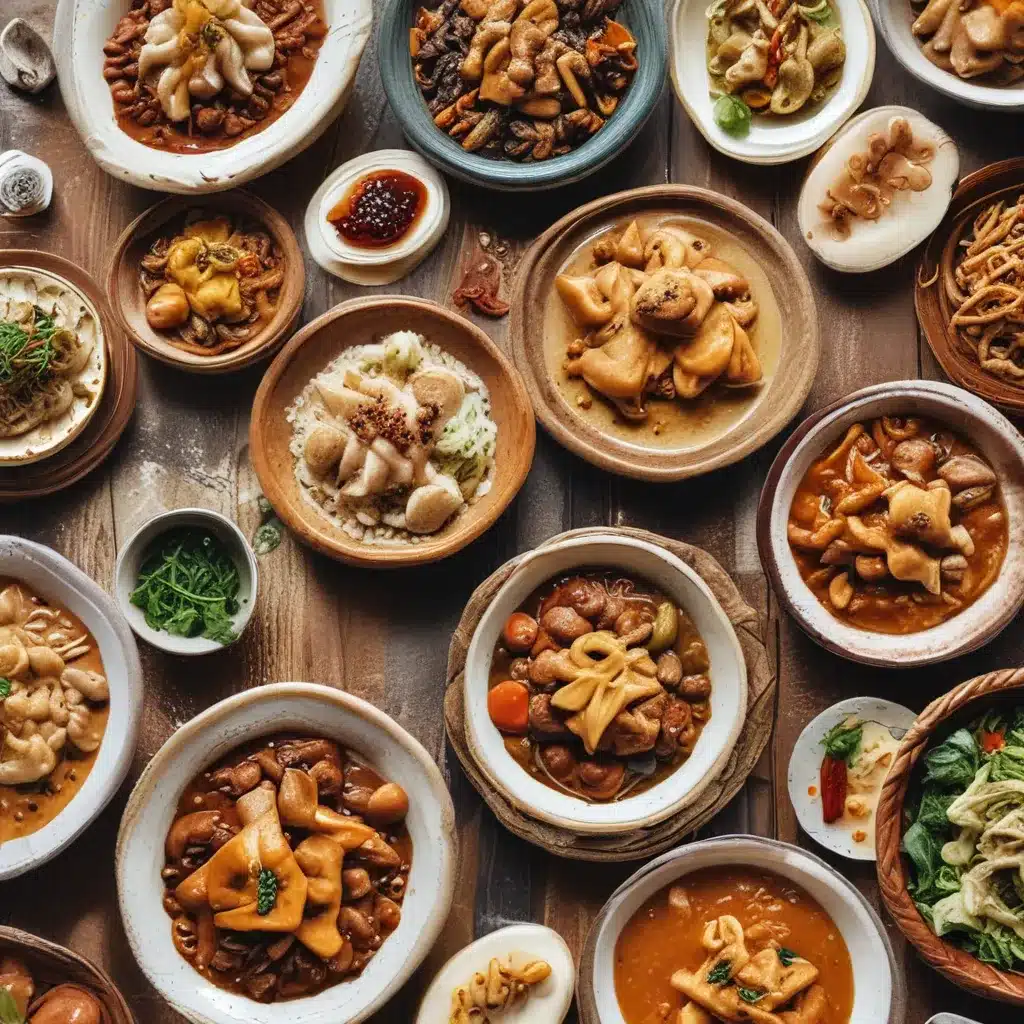
Navigating the Culinary Tapestry of Shanghai
As I step into the bustling streets of Shanghai, the air is alive with the sizzle of woks, the fragrance of spices, and the clamor of a city that has seamlessly woven together the flavors of East and West. This vibrant metropolis, a melting pot of cultures, has long been a beacon for culinary adventurers like myself, eager to unravel the mysteries of its diverse regional cuisines.
Let’s embark on a journey through the culinary landscapes of this captivating city, exploring the roots and essence of its gastronomic traditions. From the elegance of Jiangnan-style cooking to the bold and fiery flavors of Sichuan, Shanghai’s culinary tapestry is a true feast for the senses.
The Harmonious Blend of Jiangnan Flavors
Shanghai, situated along the Yangtze River Delta, has long been a hub where Eastern and Western influences converge. This cultural crossroad has given rise to a unique culinary style that masterfully blends the traditional flavors of the Jiangnan region with international flair.
The cooking methods in Shanghai are diverse, ranging from baking and stewing to braising and steaming. Seafood, a prominent feature due to the city’s proximity to the Yangtze River, is often prepared using spirited and brisk techniques, giving birth to the famous “drunken” dishes. The cuisine also makes clever use of salted meats and preserved vegetables, adding depth and complexity to its dishes.
A key aspect of Shanghai cuisine is its emphasis on preserving the natural flavors of the ingredients, with condiments used judiciously to enhance the taste. The result is a mellower and slightly sweet profile, distinct from other regional Chinese cuisines. The signature sweet and sour flavor, achieved through the harmonious interplay of sugar and soy sauce, has become the hallmark of this vibrant culinary tradition.
As described in the guide, one of the quintessential dishes that exemplifies the essence of Shanghai cuisine is the beloved Shanghai Sweet & Sour Spare Ribs. This dish features succulent spare ribs coated in a glossy, tangy, and sweet sauce – a perfect balance of flavors that has made it a beloved staple across the city.
The Serene Flavors of Zhejiang Cuisine
Beyond the bustling streets of Shanghai, the neighboring Zhejiang province offers a culinary experience that is as serene as its rolling hills and clear waters. Known as Zhe cuisine, this regional style is one of the Eight Culinary Traditions of Chinese cuisine, celebrated for its fresh and soft flavors with a mellow fragrance.
The cooking in Zhejiang is characterized by a focus on preserving the natural taste of the ingredients, particularly seafood and freshwater fish. The methods used, such as steaming and stir-frying, are designed to bring out the inherent flavors of the produce, creating dishes that are both delicate and flavorful.
One of the most notable dishes of Zhejiang cuisine is the Dongpo Pork, a testament to the region’s culinary philosophy. This dish, made from pork belly stewed in soy sauce and wine, showcases the subtlety and depth of Zhejiang flavors, where harmony and balance have always been a way of life.
As I delve deeper into the culinary heritage of Zhejiang, I’m struck by the diverse regional styles that make up this captivating cuisine. From the rich variations and use of bamboo shoots in Hangzhou to the seafood-centric dishes of Ningbo, each corner of this province offers a unique gastronomic experience, all united by a reverence for fresh ingredients and a commitment to preserving their natural flavors.
The Bold and Fiery Allure of Sichuan Cuisine
While the serene flavors of Zhejiang have captivated my palate, the bold and fiery cuisine of Sichuan province beckons me to explore its culinary depths. Known as one of the Four Great Traditions of Chinese Regional Cuisine, Sichuan’s distinctive flavors have made it a global sensation.
The Sichuan Basin, with its fertile lands, provides a wealth of ingredients, including a variety of herbs, mushrooms, and even rabbit meat and organ meats. These diverse elements are combined with the province’s signature use of garlic, chili peppers, and the unique Sichuan peppercorn, creating a symphony of flavors that tantalizes the senses.
As the guide mentions, the complexity of Sichuan cuisine is further enriched by the use of pickling, salting, and drying techniques, with preserved dishes often served as spicy masterpieces with a heavy application of chili oil.
One of the quintessential dishes that encapsulates the essence of Sichuan cooking is the renowned Ma Po Tofu. This dish, featuring tofu in a spicy and numbing sauce often with minced meat, is a celebration of the bold and diverse flavors that define Sichuan’s culinary tradition.
As I navigate the bustling streets of Chengdu, the capital of Sichuan province, I can’t help but marvel at the city’s designation as a UNESCO City of Gastronomy. This recognition is a testament to the province’s unwavering commitment to preserving and evolving its culinary heritage, a true feast for the senses.
The Hearty Allure of Xinjiang Cuisine
Leaving the fiery landscapes of Sichuan behind, I now find myself drawn to the vast deserts and towering mountains of Xinjiang, a region that has long been a cultural crossroads on the ancient Silk Road. The culinary traditions of this captivating region blend the flavors of China with the influences of Central Asia, creating a truly unique gastronomic experience.
The food in Xinjiang is hearty and robust, reflecting the diverse ethnic tapestry of the area. Dishes are often rich in meats like lamb and beef, and spiced with flavors like cumin and chili, telling stories of the caravans that once traversed this ancient trade route.
As the guide highlights, the fertile lands of Xinjiang, particularly around Hotan, have contributed to a diverse array of ingredients, making flour-based dishes, mutton, and vegetables integral to the cuisine.
One of the quintessential dishes that captures the essence of Xinjiang’s culinary heritage is the Chinese Big Plate Chicken, or Da Pan Ji. This spicy chicken stew, served on a large platter, originated from a migrant from Sichuan who blended hot chili peppers with chicken and potatoes, creating a dish that is as hearty as the region itself.
As I savor the bold flavors and satisfy my hunger with the generous portions, I’m transported to the caravans of old, where the exchange of culinary traditions across the Silk Road has left an indelible mark on the cuisine of Xinjiang.
The Subtle Elegance of Cantonese Cuisine
After the robust and spice-laden adventures of Sichuan and Xinjiang, I find myself drawn to the more refined and delicate flavors of Cantonese cuisine, one of the Eight Great Traditions of Chinese cuisine. Originating from Guangdong province, particularly the provincial capital Guangzhou and the surrounding regions in the Pearl River Delta, including Hong Kong and Macau, this culinary style is celebrated for its diversity and subtlety.
Cantonese cuisine is known for its emphasis on preserving the natural flavors of the ingredients. The cooking methods are varied, with steaming and stir-frying being the most favored due to their convenience and ability to maintain the ingredients’ inherent flavors. This cuisine also incorporates a wide range of ingredients, including a variety of meats and seafood, all prepared with a light touch to ensure a well-balanced taste.
As the guide notes, the use of spices and condiments in Cantonese cooking is modest, aimed at enhancing rather than overpowering the primary ingredients. Ingredients such as sugar, salt, soy sauce, rice wine, corn starch, vinegar, scallion, and sesame oil are commonly used, adding depth and complexity to the dishes.
One of the quintessential Cantonese dishes that perfectly captures the essence of this culinary tradition is the Char Siu Pork. This succulent pork dish, marinated in a mixture of sauces and spices including honey and plum sauce and then roasted to achieve a sweet, savory, and slightly charred flavor, is a testament to the region’s commitment to preserving the natural flavors of its ingredients.
As I savor the delicate balance of this Cantonese masterpiece, I’m reminded of the importance of restraint and balance in the culinary arts – a lesson that resonates deeply with me as I continue my journey through the diverse regional cuisines of Shanghai and beyond.
The Imperial Influence of Beijing Cuisine
No exploration of Chinese regional cuisines would be complete without a delve into the traditional flavors of Beijing, the capital of China. Beijing cuisine, also known as Jing cuisine or Peking cuisine, has evolved over centuries, influenced by culinary traditions from all over the country, particularly from the eastern coastal province of Shandong.
As the guide points out, the style that has the greatest influence on Beijing cuisine is the Chinese imperial cuisine, which originated from the Emperors’ Kitchen in the Forbidden City, where cooks from different parts of China showcased their best culinary skills to please the imperial family and officials.
Beijing cuisine is characterized by a variety of cooking methods, including roasting, frying, stewing, braising, and steaming. There is an emphasis on dark soy paste, sesame paste, sesame oil, and scallions, as well as the use of fermented tofu as a condiment. Unlike many other regions in China, there is less emphasis on rice, as local rice production in Beijing is limited by the relatively dry climate.
One of the signature dishes of Beijing cuisine that reflects the city’s historical blend of culinary influences is the Hot & Sour Soup. This steaming bowl of broth, typically featuring ingredients like mushrooms, bamboo shoots, tofu, and sometimes meat, is a harmonious fusion of flavors that pays homage to the diverse culinary heritage of China’s capital.
As I savor the nuanced interplay of sour, spicy, and savory notes in the Hot & Sour Soup, I can’t help but appreciate the way Beijing cuisine has seamlessly woven together the culinary traditions of the vast and diverse country it represents.
Blending Traditions: The Rise of Fusion Cuisine
In my quest to explore the diverse regional cuisines of Shanghai, I’ve encountered a remarkable tapestry of flavors, each with its own distinct character and cultural heritage. But as I’ve delved deeper, I’ve also discovered a fascinating trend that has captivated the culinary world: the rise of fusion cuisine.
As the article on the cultural and culinary differences between Chinese and Japanese food highlights, chefs in recent years have been increasingly experimenting with blending the traditional flavors of both culinary traditions, creating unique and exciting flavor combinations that can’t be found in traditional dishes.
Some examples of this fusion cuisine include Japanese-style ramen with Chinese spices, sushi rolls with Chinese-style fillings, and Chinese-style hot pot with Japanese ingredients. By drawing inspiration from the best of both worlds, these innovative dishes offer diners a new and captivating way to experience the flavors of China and Japan.
For me, this fusion of cuisines represents a thrilling new frontier in the world of gastronomy. It’s a testament to the creativity and open-mindedness of chefs who are willing to push the boundaries of traditional culinary boundaries, all in the pursuit of delivering unforgettable dining experiences.
As I continue my culinary adventures in Shanghai, I can’t help but wonder what other exciting fusion creations await me. Perhaps a Sichuan-inspired ramen or a Cantonese-style sushi roll? The possibilities are endless, and I can’t wait to be surprised and delighted by the innovative blending of these rich and diverse culinary traditions.
Conclusion: A Culinary Journey Through Shanghai
As I reflect on my time exploring the diverse regional cuisines of Shanghai, I can’t help but feel a deep sense of awe and appreciation for the city’s remarkable culinary tapestry. From the harmonious blend of Jiangnan flavors to the bold and fiery allure of Sichuan, each regional style has left an indelible mark on my palate, broadening my understanding and love for the rich culinary heritage of China.
The serene flavors of Zhejiang, the hearty appeal of Xinjiang, and the subtle elegance of Cantonese cuisine have all captivated me, each offering a unique window into the cultural and historical influences that have shaped the culinary traditions of this dynamic country.
And as I’ve discovered the rise of fusion cuisine, blending the flavors of China and Japan, I’ve been reminded of the boundless creativity and innovation that can arise when culinary boundaries are pushed and traditions are reimagined.
As I prepare to depart Shanghai, I can’t help but feel a sense of anticipation for the next chapter of my culinary journey. For you, dear reader, I hope that this exploration of the diverse regional cuisines of Shanghai has ignited your own passion for the rich and vibrant flavors of this remarkable city. After all, the best way to truly experience the magic of Shanghai is to immerse yourself in its captivating gastronomic landscape, one delicious bite at a time.
So, what are you waiting for? One Dragon Restaurant is ready to welcome you with open arms and tantalizing flavors. Get ready to embark on your own culinary adventure through the diverse regional cuisines of Shanghai!

